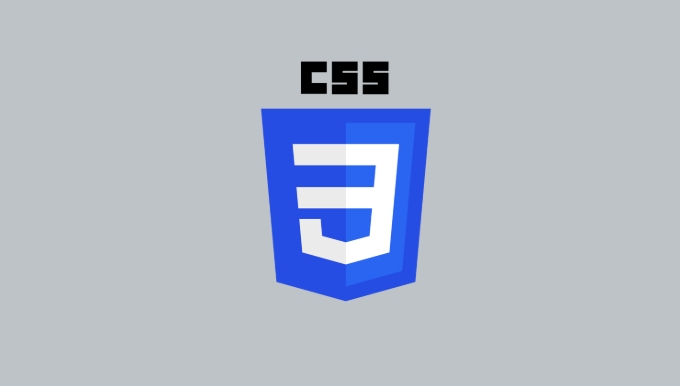The best performance of CSS is usually ID and class selector. 1. ID selectors are the fastest, because their uniqueness makes the browser stop immediately after searching, which is suitable for single-style applications; 2. Class selectors are balanced and reusable, suitable for most style tasks; 3. Avoid excessive nesting or complex selectors (such as pseudo-classes, attribute selectors), because their parsing is slow, especially in large projects. Prioritize the use of simple selectors to improve rendering efficiency and maintain code maintenance.

When it comes to CSS performance, most modern browsers are highly optimized, so the differences between selectors aren't usually a big concern for everyday websites. But if you're working on large-scale projects or aiming for optimal rendering performance, some CSS selectors do perform better than others — mostly because of how browsers process them.

In general, simple selectors like class and ID selectors are the most performant , while complex or deeply nested selectors can introduce unnecessary overhead.

ID Selectors Are Fastest (Mostly because They're Unique)
Browsers treat ID selectors ( #header ) as unique identifiers. Since each ID is supposed to appear only once per page, the browser can optimize by stopping its search after finding the first match.
This makes #some-id extremely fast compared to other selector types.

Best use:
- For one-off styles that need to be applied to a single element.
- Avoid overusing IDs for styling — they're hard to override and not very reusable.
Note: Don't rely on ID selectors just for speed unless you really need them. Performance gains here are negligible in most cases.
Class Selectors Are the Workhorse — Balanced and Reusable
Class selectors ( .btn , .active ) are the go-to choice for most styling tasks. Browsers are also heavily optimized for them, making them nearly as fast as ID selectors.
They offer:
- Reusability across multiple elements
- Good performance
- Easier maintenance and overrides
Tips for performance:
- Use semantic class names that describe purpose, not style (eg,
.nav-linkinstead of.blue-text) - Avoid chaining too many classes together unecessarily (like
.btn.primary.large.success), especially if it's not needed for specificity
Avoid Overly Complex Selectors
Selectors like div ul li a span or section > div:nth-child(2) .highlight may work fine visually, but they take longer for the browser to parse and match.
Why?
- The browser reads selectors from right to left.
- So
div ul li a spanstarts with matching allspanelements, then checks if they're inside ana, which is inside anli, and so on — which can get slow if used excessively.
Examples of what to avoid or minimize:
- Deep nesting like
body div header nav ul li a - Heavy use of pseudo-classes like
:nth-child(n)in large lists - Universal selector (
*) combined with attribute selectors
If you find yourself writing long chains or deep nesting, consider adding a simple class instead.
Attribute and Pseudo-Class Selectors Are Slower but Still Useful
Selectors like [type="text"] , :hover , or input:checked are more expensive because they require additional checks beyond element type or class.
They're not slow enough to break your site , but overuse — especially in large forms or dynamic interfaces — can add up.
Use these when:
- You need to target specific states or attributes (like form validation)
- When JavaScript-driven styles depend on dynamic values
But again, prefer adding a class via JS if you're toggling visual states — it's faster and easier to maintain.
So, the most performant CSS selectors are simple ones like ID and class selectors. More complex selectors have their place, but they come with a small cost in processing time. Unless you're building something huge or performance-critical, this won't make a visible difference — but knowing how selectors work helps write cleaner, more scalable code.
Basically that's it.
The above is the detailed content of Which CSS Selectors are the most performant and why?. For more information, please follow other related articles on the PHP Chinese website!

Hot AI Tools

Undress AI Tool
Undress images for free

Undresser.AI Undress
AI-powered app for creating realistic nude photos

AI Clothes Remover
Online AI tool for removing clothes from photos.

Clothoff.io
AI clothes remover

Video Face Swap
Swap faces in any video effortlessly with our completely free AI face swap tool!

Hot Article

Hot Tools

Notepad++7.3.1
Easy-to-use and free code editor

SublimeText3 Chinese version
Chinese version, very easy to use

Zend Studio 13.0.1
Powerful PHP integrated development environment

Dreamweaver CS6
Visual web development tools

SublimeText3 Mac version
God-level code editing software (SublimeText3)

Hot Topics
 What is 'render-blocking CSS'?
Jun 24, 2025 am 12:42 AM
What is 'render-blocking CSS'?
Jun 24, 2025 am 12:42 AM
CSS blocks page rendering because browsers view inline and external CSS as key resources by default, especially with imported stylesheets, header large amounts of inline CSS, and unoptimized media query styles. 1. Extract critical CSS and embed it into HTML; 2. Delay loading non-critical CSS through JavaScript; 3. Use media attributes to optimize loading such as print styles; 4. Compress and merge CSS to reduce requests. It is recommended to use tools to extract key CSS, combine rel="preload" asynchronous loading, and use media delayed loading reasonably to avoid excessive splitting and complex script control.
 External vs. Internal CSS: What's the Best Approach?
Jun 20, 2025 am 12:45 AM
External vs. Internal CSS: What's the Best Approach?
Jun 20, 2025 am 12:45 AM
ThebestapproachforCSSdependsontheproject'sspecificneeds.Forlargerprojects,externalCSSisbetterduetomaintainabilityandreusability;forsmallerprojectsorsingle-pageapplications,internalCSSmightbemoresuitable.It'scrucialtobalanceprojectsize,performanceneed
 Does my CSS must be on lower case?
Jun 19, 2025 am 12:29 AM
Does my CSS must be on lower case?
Jun 19, 2025 am 12:29 AM
No,CSSdoesnothavetobeinlowercase.However,usinglowercaseisrecommendedfor:1)Consistencyandreadability,2)Avoidingerrorsinrelatedtechnologies,3)Potentialperformancebenefits,and4)Improvedcollaborationwithinteams.
 CSS Case Sensitivity: Understanding What Matters
Jun 20, 2025 am 12:09 AM
CSS Case Sensitivity: Understanding What Matters
Jun 20, 2025 am 12:09 AM
CSSismostlycase-insensitive,butURLsandfontfamilynamesarecase-sensitive.1)Propertiesandvalueslikecolor:red;arenotcase-sensitive.2)URLsmustmatchtheserver'scase,e.g.,/images/Logo.png.3)Fontfamilynameslike'OpenSans'mustbeexact.
 What is Autoprefixer and how does it work?
Jul 02, 2025 am 01:15 AM
What is Autoprefixer and how does it work?
Jul 02, 2025 am 01:15 AM
Autoprefixer is a tool that automatically adds vendor prefixes to CSS attributes based on the target browser scope. 1. It solves the problem of manually maintaining prefixes with errors; 2. Work through the PostCSS plug-in form, parse CSS, analyze attributes that need to be prefixed, and generate code according to configuration; 3. The usage steps include installing plug-ins, setting browserslist, and enabling them in the build process; 4. Notes include not manually adding prefixes, keeping configuration updates, prefixes not all attributes, and it is recommended to use them with the preprocessor.
 What are CSS counters?
Jun 19, 2025 am 12:34 AM
What are CSS counters?
Jun 19, 2025 am 12:34 AM
CSScounterscanautomaticallynumbersectionsandlists.1)Usecounter-resettoinitialize,counter-incrementtoincrease,andcounter()orcounters()todisplayvalues.2)CombinewithJavaScriptfordynamiccontenttoensureaccurateupdates.
 CSS: When Does Case Matter (and When Doesn't)?
Jun 19, 2025 am 12:27 AM
CSS: When Does Case Matter (and When Doesn't)?
Jun 19, 2025 am 12:27 AM
In CSS, selector and attribute names are case-sensitive, while values, named colors, URLs, and custom attributes are case-sensitive. 1. The selector and attribute names are case-insensitive, such as background-color and background-Color are the same. 2. The hexadecimal color in the value is case-sensitive, but the named color is case-sensitive, such as red and Red is invalid. 3. URLs are case sensitive and may cause file loading problems. 4. Custom properties (variables) are case sensitive, and you need to pay attention to the consistency of case when using them.
 Case Sensitivity in CSS: Selectors, Properties, and Values Explained
Jun 19, 2025 am 12:38 AM
Case Sensitivity in CSS: Selectors, Properties, and Values Explained
Jun 19, 2025 am 12:38 AM
CSSselectorsandpropertynamesarecase-insensitive,whilevaluescanbecase-sensitivedependingoncontext.1)Selectorslike'div'and'DIV'areequivalent.2)Propertiessuchas'background-color'and'BACKGROUND-COLOR'aretreatedthesame.3)Valueslikecolornamesarecase-insens






